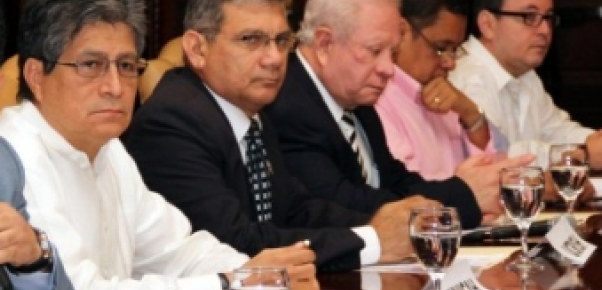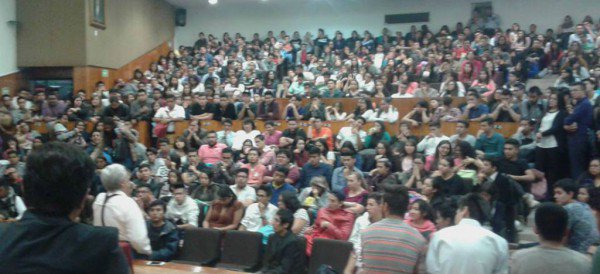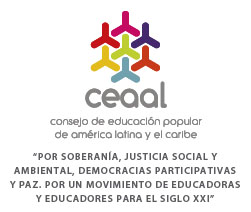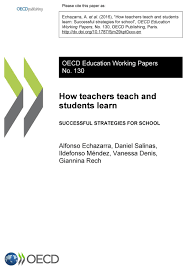Fuente: http://www.theatlantic.com/ 5 de Mayo de 2016
Campus-carry laws add unnecessary worry to communities already overwhelmed by unease.
ATLANTA, Ga.—A while back, a student at Georgia Tech, where I teach, showed me a series of anonymized “threats” that students in a notoriously difficult class of mine had posted in an online discussion forum. I’d just returned grades, and nobody was happy. “Does he have kids?” one asked. “I’m going to steal them and blackmail him,” answered another.” “Had kids,” added a third.
They’re the kind of comments you wouldn’t think twice about—just typical college students communing over a tough professor. Unless, that is, you also knew that those students might be permitted to carry concealed firearms on campus. Then their words might take on a different tenor, even if just hypothetically.
Eight states already allow gun possession on college campuses. Texas was the latest to adopt a campus-carry law, which will take effect August 1. Andlegislation allowing licensed gun holders over 21 to carry concealed handguns on college campuses set to reach the Georgia Senate floor as early as this week might make my state the ninth. (Of the remaining states, 19 currently ban concealed carry on campuses, and 23 leave the decision up to individual campuses.)
Texas’s law has incited a spate of recent distress among educators. Fritz Steiner, UT Austin’s dean of architecture, cited the law as a catalyst for seeking another position—he is leaving UT to become the dean of the University of Pennsylvania School of Design. The University of Virginia media studies professor Siva Vaidhyanathan, who is a UT Austin alumnus, withdrew his candidacy as a finalist for dean of that school’s Moody College of Communication due to his concerns about the new gun law. And faculty everywhere spurned a University of Houston Faculty Senate presentation on teaching after the law’s enactment. The tips it offers to faculty in the campus-carry era include “Drop certain topics from your curriculum” and “limit student access off-hours.”
University administrators don’t particularly like such policies either. Among those testifying against campus carry before the Georgia Senate Judiciary Committee last week was the University System of Georgia chancellor Hank Huckaby. His office, along with the presidents and campus police chiefs of all 29 University System of Georgia institutions, including the University of Georgia and the Georgia Institute of Technology, all oppose concealed carry on campus. And it’s not just the administrators and faculty who are concerned. A survey conducted by Georgia Tech’s Student Government Association two weeks ago revealed that a majority of students oppose concealed handguns on campus.
College students’ whole lives have been lived bathed in vague and constant threat.
Like elsewhere, critics of campus carry in Georgia make appeals to the safety of students and faculty. Concessions in the current bill would still prohibit guns in dormitories, fraternities and sororities, and athletic facilities—an exclusion justified by the possible presence of alcohol in these areas. Last weekend, the gun control advocacy nonprofit Everytown for Gun Safety aired a television ad opposing campus carry, which also cites alcohol’s impact on gun safety as a primary concern.
Meanwhile, Governor Nathan Deal, who had been swayed to oppose campus carry in a bill two years ago that expanded Georgia gun laws, has indicated his support for the measure this time around—partly because the “Wild West scenario” predicted after 2014’s so-called “Guns Everywhere” bill has not come to pass.
Apart from the discharge of firearms themselves, another case against guns on campus appeals to the chilling effects it might have on free speech. Writing last week for The Atlantic, Firmin DeBrabander cited the University of Houston presentation as evidence that campus carry could censor college classrooms. If faculty and students cannot discuss contentious issues in the open without “fear of inciting angry students to draw their guns,” Debrander reasons, then democracy itself could be undermined.
But both the appeals to safety and to free speech only superficially address the problem with guns on campus, and they do so by taking positions that many gun-rights proponents don’t share anyway. Safety cuts both ways, and appeals to security have long justified support for expanded gun rights in America. If college campuses are among the few venues where guns are prohibited, argue gun advocates, then they will become targets for attacks. And when it comes to free speech, supporters of expanded gun rights will happily pit their Second Amendment against their opponents’ First. These arguments lead nowhere—particularly in states like Texas and Georgia with strong and proud cultures of firearms ownership.
A better case against guns on campus appeals to anxiety rather than safety or speech. Deep and pervasive unease already pervades college campuses, and safety and speech worries are just instances of a more general and more universal anxiety.
Today’s college students are beset by unease. And it’s no wonder why—their whole lives have been lived bathed in vague and constant threat. Today’s 21-year-old students were born in 1995. They were kindergarteners on 9/11, and their whole childhoods were backgrounded by forever war. Their primary and secondary schooling took place under the supposed reforms of No Child Left Behind, which meant an education designed around lots of high-stakes testing and the preparation necessary to conduct it.
They entered high school just after the 2008 global financial crisis, after which declines in the tax base led to billions of dollars of funding cuts to primary, secondary, and postsecondary public education. Here in Georgia, the lottery-funded HOPE Scholarship, which had paid full college tuition for students who kept a 3.0 average, increased its achievement requirements for full tuition and eliminated support for books and fees. Meanwhile, tuition rose precipitously—35 percent over the last five years at Georgia Tech—as funding declined. And as state funding has waned, flagships like UGA and Georgia Tech have increasingly pursued more lucrative out-of-state enrollments, while increasingly relying on gifts, endowments, grants, and contracts as state funding has become a minority contributor to institutional budgets.
Getting into college also became harder. In the arms race to raise test scores and thereby rankings, admissions have pushed average SAT scores at Georgia Tech up from 1420 in 2013 to 1449 in 2015, only adding to the anxiety of admission. Twenty-five points doesn’t sound like much, but because of the way the SAT is scored, it might amount to a difference of as few as one or two incorrect answers on the exam. A couple answers might measure a differential in academic performance and potential, but it might also represent the accident of a cold testing facility or a stressful commute into the exam. Every aspect of these kids’ lives are drawn taut. One badly timed sneeze can spell disaster.
Once enrolled, college campuses are brimming with new anxieties, and newly trenchant versions of old ones. The issues of preparation, access, and affordability to create an environment in which mere survival overwhelms learning—let alone indulgences like free speech. Then someone like me comes along and teaches the same class I would have taught five or 10 or 15 years ago, only to find that students are falling apart from the stress rather than from the materials. No wonder they fantasize about kidnapping my family.
A concealed-carry campus becomes a campus in which everyone carries a potential gun.
Even the successful students still must contend with a much worse economic lot than their cohorts did in the past. At Georgia Tech, even students who pursue “practical” degrees in areas of supposed economic growth, like computing, still face massive competition and pressure for jobs. I have students who have filed hundreds of applications and endured five or 10 separate interviews for a single entry-level job, including time-consuming cross-country trips to all-day interviews, before finally receiving an offer. The only greater motivator than fear is debt.
Guns arrive on campus today in this context of massive, wholesale collegiate anxiety. DeBrabander is right to worry that they might have a chilling effect on speech, but the chill goes so much deeper, straight to the bone. A concealed-carry campus becomes a campus in which everyone carries a potential gun. And the potential gun is far more powerful than the real gun, because it both issues and revokes a threat all at once. Made habitual and spread atop an already apprehensive base, that sort of mental anguish is nothing short of terrorism.
Think back to those online comments from my students. Even if they were merely playful—which really is all that they were—they suddenly seem threatening once firearms are in the picture. You don’t even need a gun to make it happen. The idea of a gun is sufficient. And that’s just me! I’m the one with the tenured professorship! Now imagine the students, all trying to make it through my class and everything else with all those ideas of guns in the room and on the quad.
An unspoken secret about firearms is that both proponents and opponents of gun laws share a common position: that guns ascribe a feeling of power and control to their bearers. Gun detractors are foolish not to acknowledge this truth of firearms, and they are reckless for sneering at gun owners who seek (legal) refuge in this feature of the weapons. Yes, we pay a dear price, measured in mortal lives, for that feeling of control and power when firearms are used improperly. And yes, as a nation, we seem to have decided that this price is acceptable. But not just from insanity or evil. When violence does erupt, it finds its source in fear and anger and hopelessness more than it does in mental instability. Absent other comforts and certainties, is it any wonder that firearms become such a tempting salve?
Yet in giving in to that temptation, we pay another price, too. It’s harder to see but even more pervasive. It is the quiet, constant apprehension of the idea of the gun in the room, the truly silenced barrel of the firearm that probably doesn’t exist but might, and whose possible existence alters the way we think and behave.
That guns on campus are having their moment right now is no accident. The entire college experience, along with the supposedly prosperous young adulthood into which college spills out, is imploding under the weight of unprecedented apprehension. And worst of all: That apprehension isn’t even neurotic and overzealous. It’s entirely reasonable for young people to fear a future that has never been more tenuous.
There are reasons to fear on college campuses. But those fears are misdirected at hypothetical bad guys with guns against whom good guys with guns would prevail. We’d better spend our worry—and our legislative effort—de-escalating the massive anxiety among college students today. We can do that by providing the resources to teach them well as kids, to give them affordable opportunities to pursue higher education, and to help them secure productive places in society matched to their talents and capacities. The great tragedy and sorrow of the push to extend gun rights to every nook and cranny of American life is not that firearms make people feel greater power and greater control in those contexts. It’s that they are so stripped of that power and control that they should need to seek solace in guns in the first place.
IAN BOGOST is a writer, game designer, and contributing editor atThe Atlantic. He is the Ivan Allen College Distinguished Chair in media studies and a professor of interactive computing at the Georgia Institute of Technology.
El link original: http://www.theatlantic.com/education/archive/2016/03/campus-carry-anxiety-age/472920/















 Users Today : 142
Users Today : 142 Total Users : 35420276
Total Users : 35420276 Views Today : 167
Views Today : 167 Total views : 3354812
Total views : 3354812